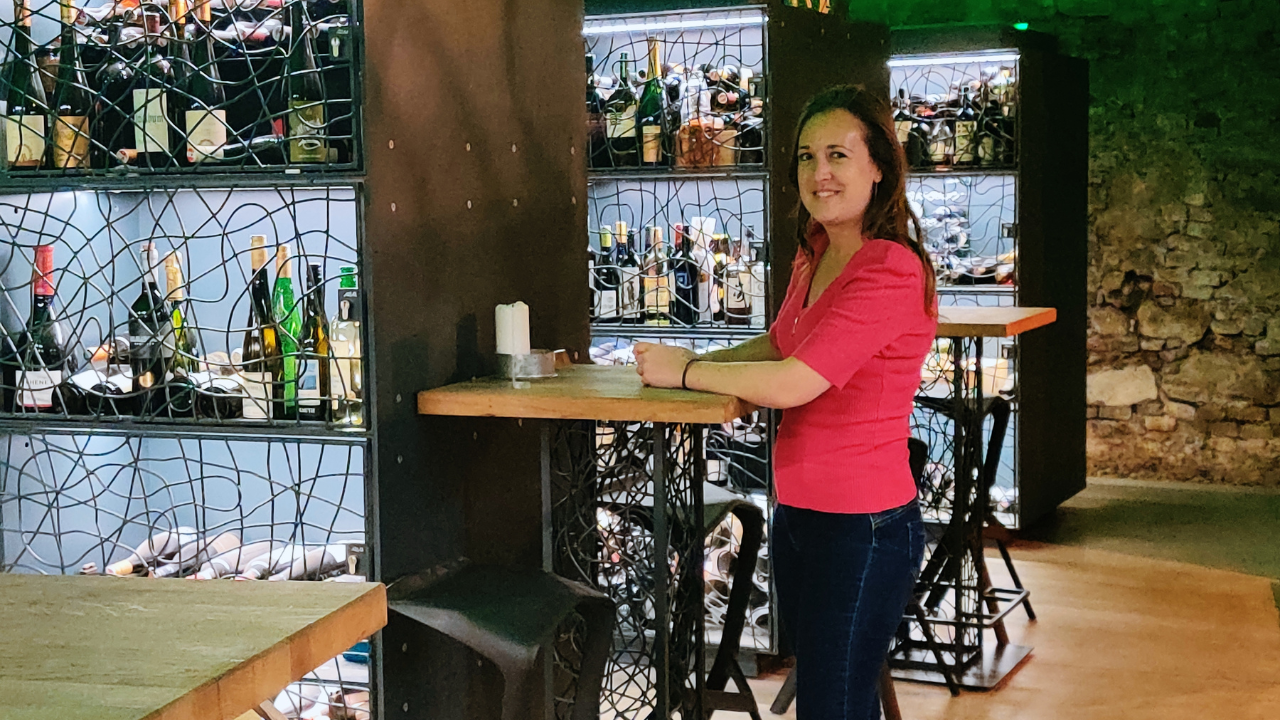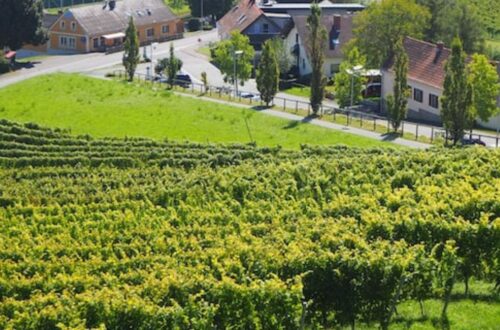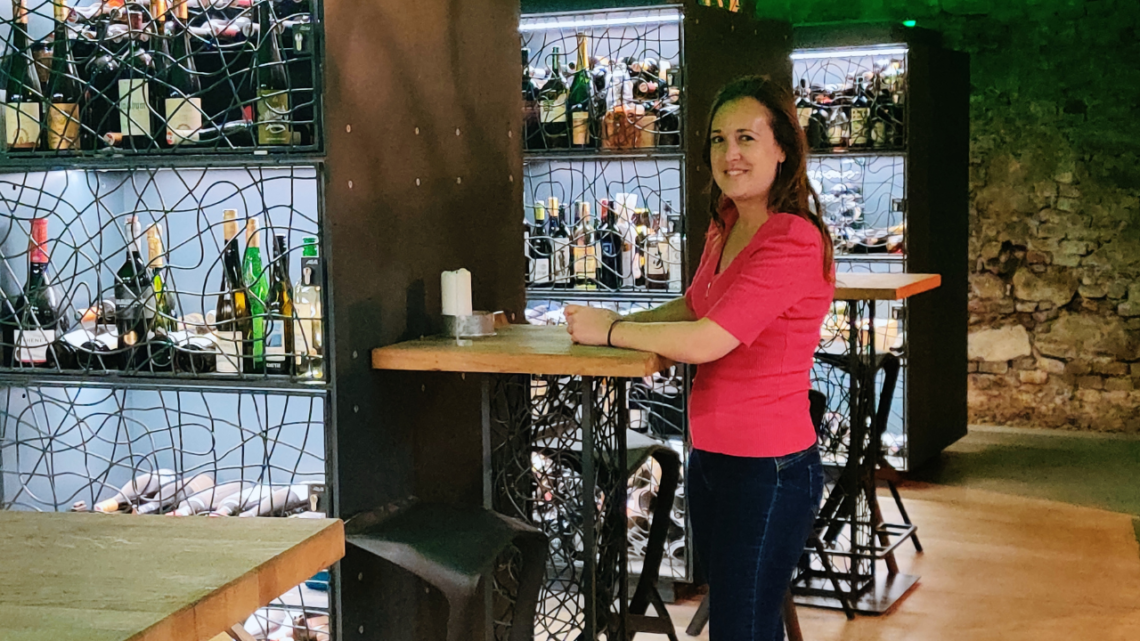
Hidden Wine Cellars in Vienna: An Unforgettable Journey
Did you know Vienna had wine cellars underneath the town? The first district of Vienna has clearly more than meets the eye. There’s a whole world underneath!
Unfortunately, this world isn’t open to the public…or is it?
Let me take you on a tour I signed up. And for those planning on taking the tour, don’t worry, you won’t be spoiled by this post. It was so rich in information that I celary can’t put everything in a single post…and I can’t rob you of tasting wines in a cellar underneath the business of the Vienna.
A few weeks ago, I embarked on Vienna’s famous “Hidden Wine Cellars in Vienna” tour. This journey combined history, delicious wines, and a touch of adventure! For roughly two hours, you’ll visit three private cellars, which are not open to the public, and will enjoy three wines away from the bustling streets of Vienna.
A sneak peek to what awaits you on the Hidden Cellars in Vienna’s tour
The adventure began at the Old Field Pharmacy near Stephansplatz. As we gathered, our guide set the stage for what promised to be a unique exploration of Vienna’s hidden treasures.
With a small, intimate group, we were ready to uncover the secrets lying beneath the city!
Our first stop was at Haas&Haas, an unassuming entry that led us four stories underground to a hidden cellar known as Porta Dextra.
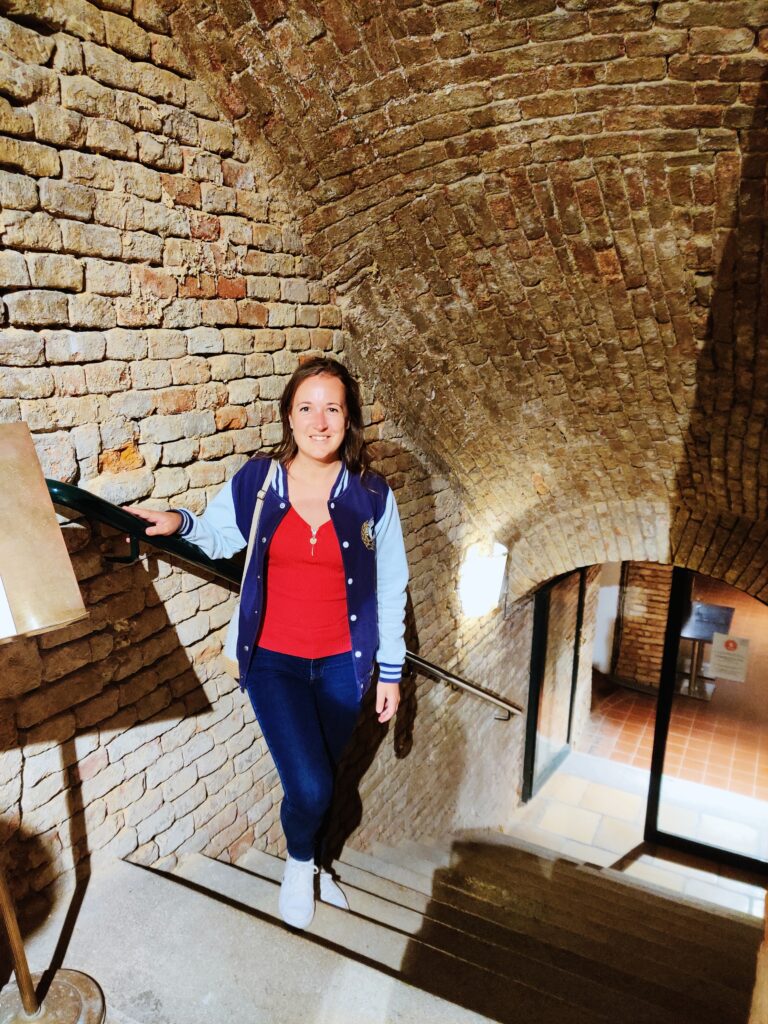
As we descended, the air grew cooler, and the hustle of the city faded away, replaced by the quiet echoes of history. This cellar sits on what was once the Roman military camp Vindobona, established in the first century. The Porta Principalis Dextra, a main gate of the camp, opened onto the road leading to Ala Nova, following what is now Wollzeile.
ANECDOTE : In the first century, the Romans established the military camp Vindobona on the site of a Celtic settlement. It served, along with numerous other fortifications along the Danube, to protect the northern border of the Roman Empire. Between 4,000 and 6,000 legionaries were stationed in Vindobona until the 5th century. The camp had three city gates and was bordered to the north by a tributary of the Danube. The Porta Principalis Dextra opened onto the Limes road to Ala Nova (Schwechat), which roughly followed the current Wollzeile. One of the towers of the city gate stood at the site of this house. Numerous stone blocks from the gate and city wall were reused in the construction of this house and are particularly evident in the lower floors. In the Middle Ages, the Babenbergs restored the Roman fortifications, which served as Vienna’s city wall until the end of the 12th century. Consequently, the layout of the Roman military camp is still visible in the city center’s structure today—Graben-Naglergasse-Tiefer Graben-Salzgries-Rabensteig-Kramergasse. Around 1200, the city was expanded mainly with the ransom for the captive Richard the Lionheart. During this expansion, the stone material from the dismantled old city wall was used to fill the moats.
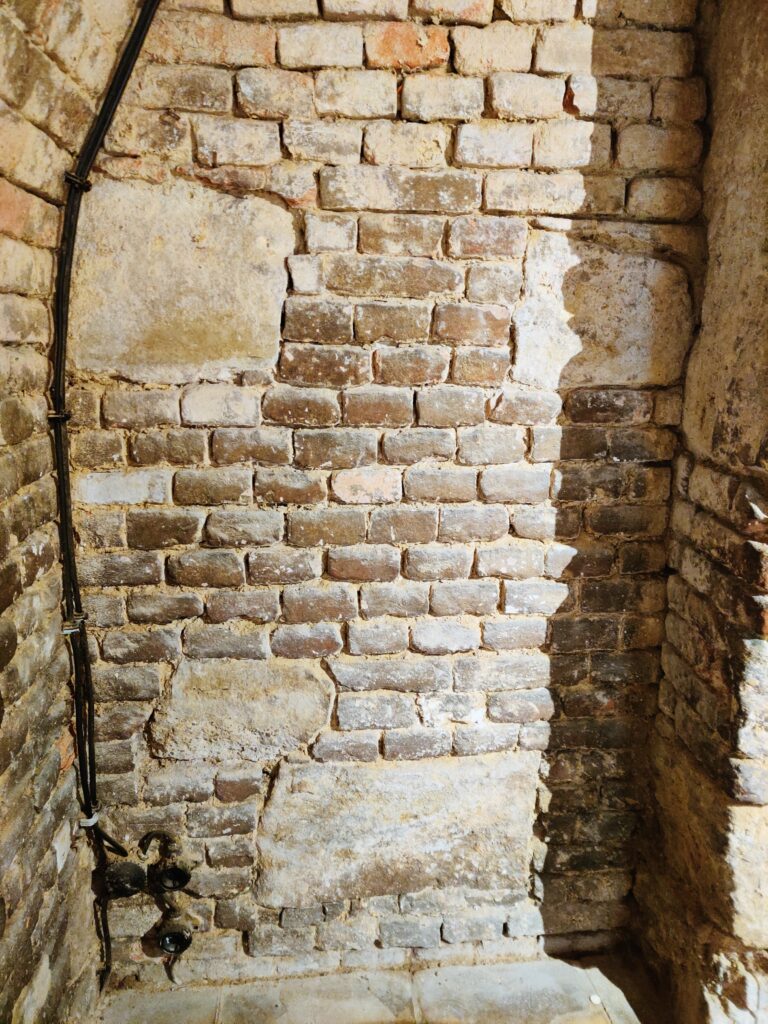
ANECDOTE : Austria was already all about sustainability back then. See the big stones? These are actually the original stones that were reused when the cellar was rebuilt.
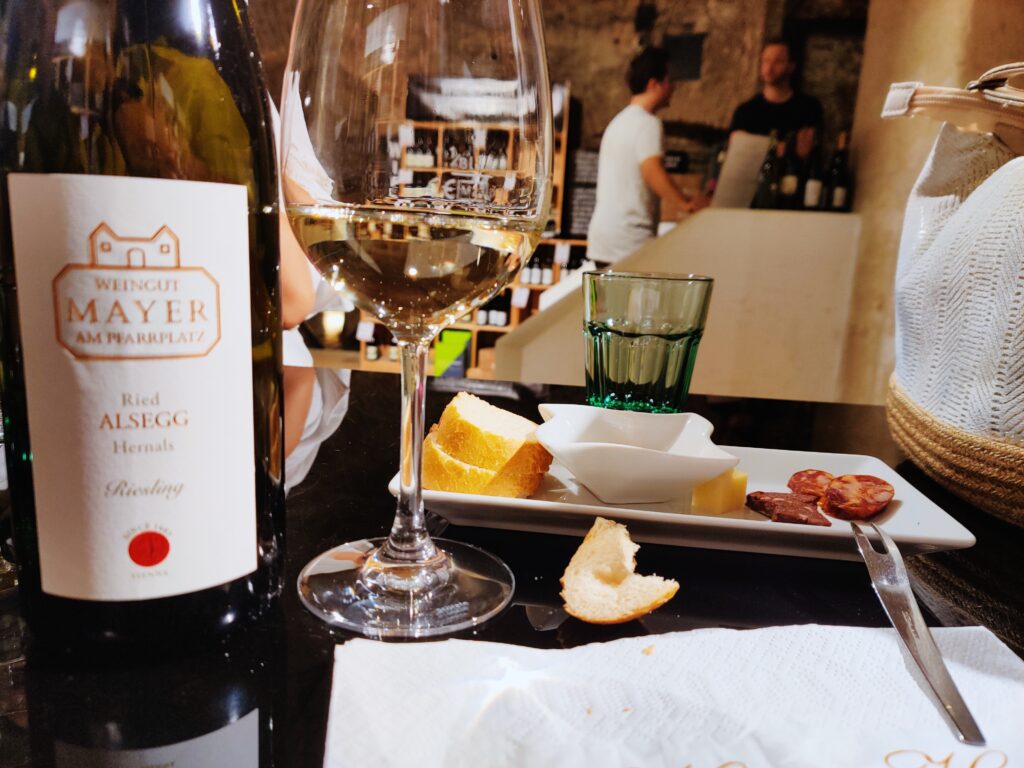
In this atmospheric cellar, we sampled our first wine, a Riesling from Mayer am Pfarrplatz. Established in 1683, this winery in Vienna-Heiligenstadt has a long-standing tradition. The Riesling was a delightful start, with fruity and crisp notes, aromas of white flowers and citrus, and a refreshing high acidity that danced on the palate.
Next, we walked to the Winebank cellar. This private club, with locations worldwide, allows members to rent lockers starting from six bottles. By renting a locker, you get granted access to Winebank cellars globally.
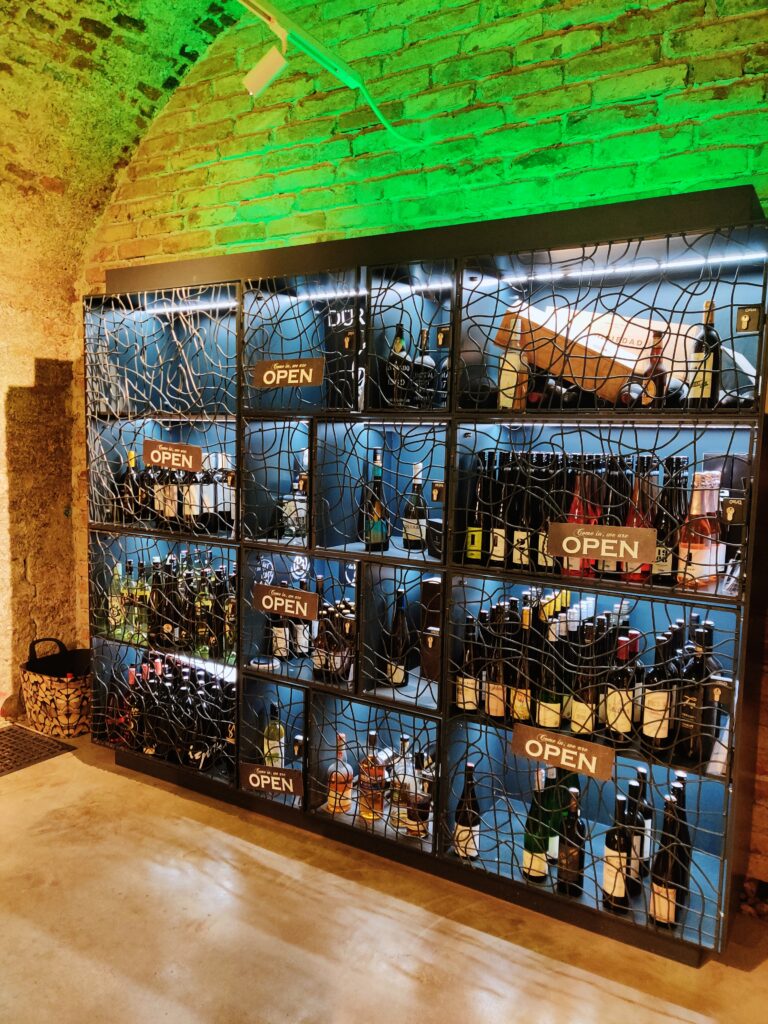
I love the way this fosters a sense of community among wine lovers. If lockers are indictaed “open” (by a sign), members can take a bottle, note it down, and receive an invoice later.
In this private club, we tasted a robust red wine from Vienna, paired with cheese aged 12 months in the very cellar we stood in.
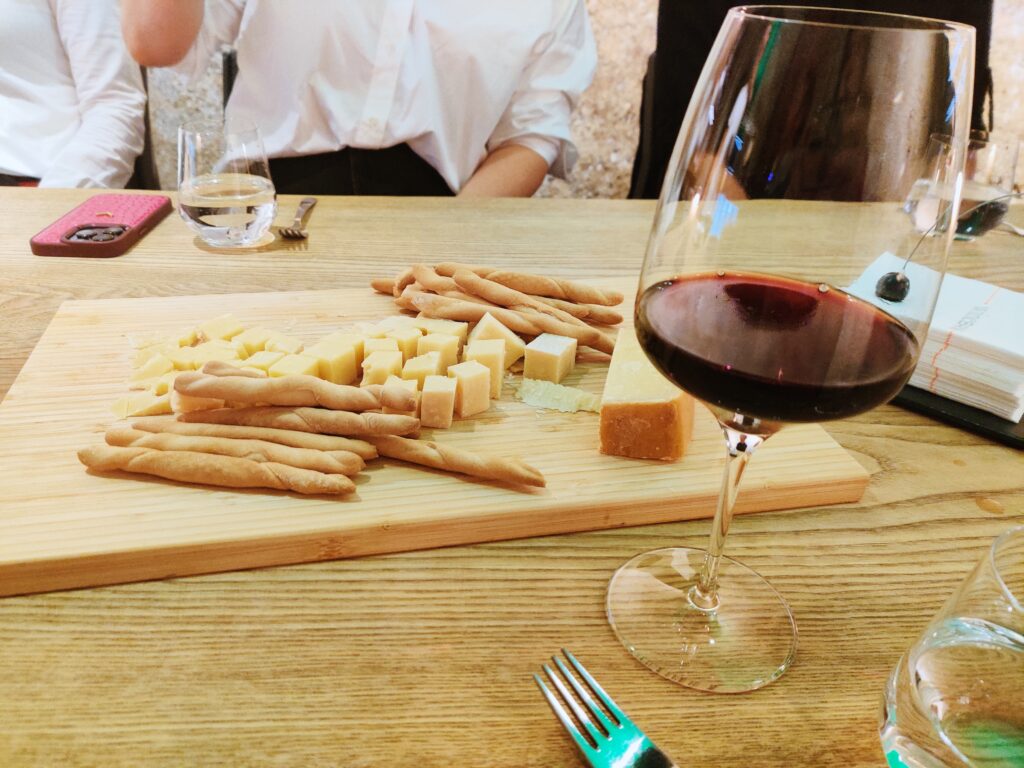
The wine was dark red with a violet rim and smelled of intense berry fruit. On the palate, it was velvety and very approachable with a good length. The flavors melded beautifully, I was actually surprised. I thought Vienna only made white wine. I was surprised by the quality of this red…and I might just try and bring back some next time I go to Vienna.
Our final destination was a cellar that once belonged to a private club but has since changed ownership and now stands emptied. Despite its emptiness, the cellar exuded a charm and history that was palpable.
It is called: Der Keller and was founded in 1995.
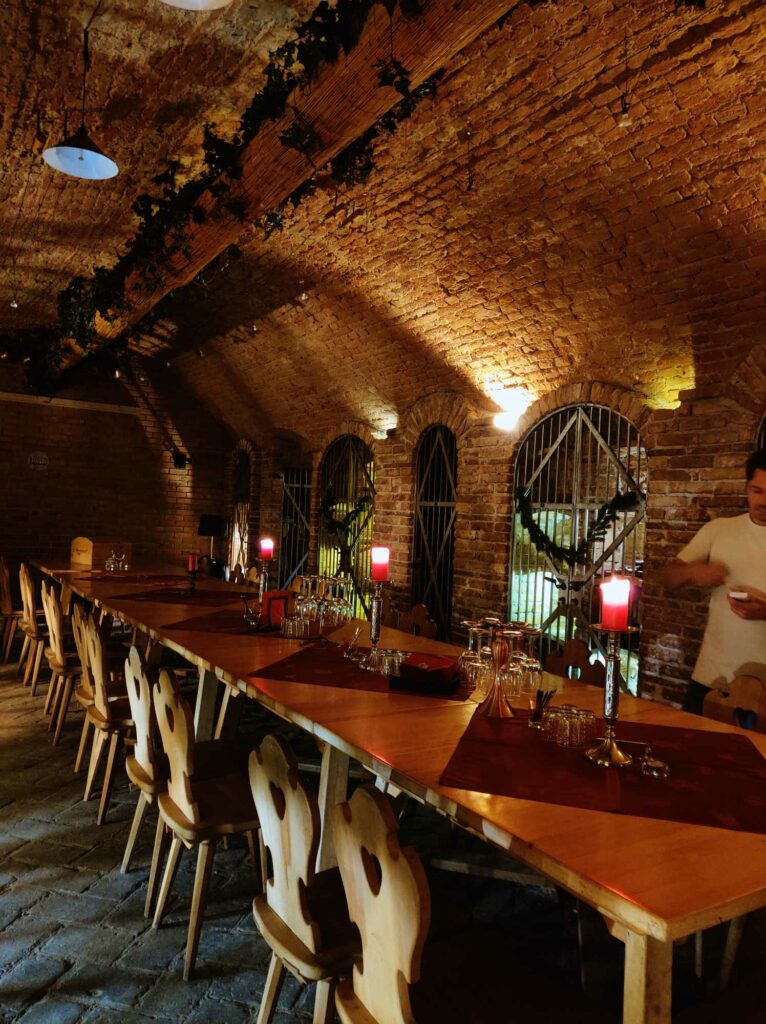
ANECDOTE : This cellar used to be one of Vienna’s oldest medieval monastery cellars and is buried deep beneath the Laurenzerberg. These vaulted cellars extend partially under the street and are likely parts of the old fortification system. After being unused for a long time, these cellars, which served as air-raid shelters during the bombing nights, were revived as club rooms.
In 1995, the founding general assembly of the Club for Cultivated Wine Culture, DER KELLER, took place. The club’s founder and president, Brigitte Dvorak, rented the premises for club purposes. Only members have access to the premises. The club operates under the motto “For people who are of one mind, but not always of one opinion.”
The club cellar alone covers 350 square meters on the second basement level. The main room is likely the former lower church, with the nave of the monastery church above it.
The Knights’ Hall is the largest room. The heavy beech furniture was crafted based on old designs from reprint books, inspired by August Graef’s “Der Landtischler” (1894). Most of the furniture is assembled without glue, using pegs to allow the wood to adjust to moisture levels. The pegs must be regularly hammered in due to fluctuations in humidity, but this prevents the wood from cracking. All the lattice doors were designed specifically for the space. Throughout the area, modern technology is discreetly hidden behind old walls.
The room with the round table is located under the street corner of Laurenzerberg/Fleischmarkt. One of the old corridors leads under the Fleischmarkt to the cellar of the Chamber Opera in Drachengasse, while the other leads under the Laurenzerberg to the house on the corner of Fleischmarkt. These corridors are walled up and partially unexcavated. Due to the connecting corridors to neighboring houses, this room was frequently used as an air-raid shelter.
In the part beneath the Laurenzerberg, there is a labyrinth. This long, narrow room on the outer side of the building wall contains intricately built cells for retreat.
In the Knight’s Hall, we tasted a Gemischter Satz from Zahel. This traditional Viennese wine-making method is different of a cuvée. Do you know the difference?
Gemischter Satz involves mixing different grape varieties during harvest to ensure stability in case of a poor yield whereas in a cuvée, you blend different wines.
Anyway, the result was a complex and flavorful wine.
This wine is the soul of Zahel and simultaneously the flagship in Vienna and around the world. With fresh fruit notes of white peach, apricot, and pineapple, it offers a dry taste with well-integrated acidity, leading to a drinkable, fruity, and medium-bodied finish. The blend includes Grüner Veltliner, Riesling, Chardonnay, Pinot Gris, Pinot Blanc, and Traminer, sourced from vineyards in Nussdorf, Mauer, and Oberlaa.
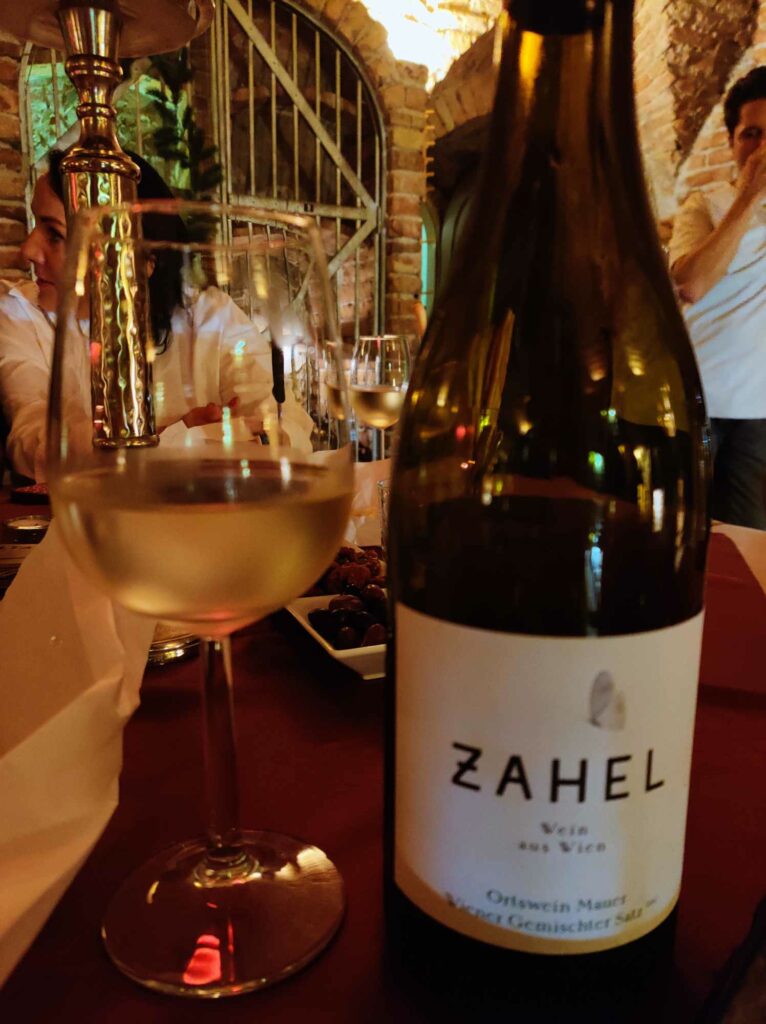
The tour took us around two hours to complete and I loved every second of it!
Seeing the price, it took me some time to sign up, but I don’t regret it and to be truthful, I might just sign up again for a resfresher’s course and be able to sit in those historical cellars once again.
Practical Information
- Price: Approximately €98 per person.
- Duration: 2.5 hours.
- Languages: German and English.
- Meeting Point: Old Field Pharmacy, Stephansplatz 8A.
- Ending Point: Schwedenplatz
Conclusion : Is Hidden Wine Cellars in Vienna worth it?
If you’re a wine lover visiting Vienna, the “Hidden Wine Cellars in Vienna” tour is an experience you cannot miss.
Pro Tip: Wear comfortable shoes, as there are some stairs involved. Bring your camera to capture these unique historical spaces, and most importantly, come with an open mind and a sense of adventure!
It offers a rare glimpse into the city’s ancient wine cellars, an opportunity to taste really great wines, and a journey through Vienna’s rich history. Whether you’re a novice or a seasoned connoisseur, I really recommend you take the tour. The group is small and the guide knowledgeable so you’ll be able to ask any questions you want.
This tour will leave you with unforgettable memories and a deeper appreciation for Austrian wines.
Check out other reviews of the Hidden Cellars in Vienna’s tour
For more information and to book your own adventure, visit GetYourGuide




